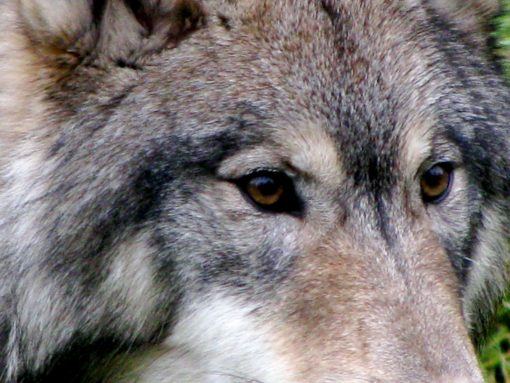
Gray wolf. Photo: Jeffrey St. Clair.
Recently the Idaho Fish and Game changed its rules to allow any hunter or trapper to kill up to 30 wolves per year. And the state is considering a proposal to open much of the state to year-round wolf killing.
In Montana, the MDFWP is discussing increases from 5 to 10 wolf tags for some parts of the state.
In both states, we will be eliminating the ecological function of predators. Predators can change how large animals like elk use the landscape and can also preclude excessive browsing of critical areas like riparian zones. Also, wolf kills can provide an essential source of food for scavengers from magpies and eagles up to and including even grizzlies.
Is this hatred of wolves based on massive livestock losses or huge declines in elk numbers?
In 2019, Montana had about 2,550,000 cattle[i], and 108 confirmed cattle losses attributed to all predators, including wolves.[ii] That is such a small percentage as to be laughable.
By contrast, in 2018, Montana ranchers lost 37,000 cattle just to winter storms. The federal Livestock Indemnity Program (one of many rancher welfare programs) paid ranchers more $11.1 million of taxpayer funds.[iii]
How about predator impacts on hunting? In, 1995 when wolves were first restored to Yellowstone and Central Idaho, the Montana elk population was 109,500.
In 2019, Montana’s elk population was estimated at (134,557)[iv] Twenty-five percent over upper objective) and the 2018 elk harvest was 27,793.[v]
A similar situation exists in Idaho. The 1995 Idaho elk population was estimated to be 112,333, and the harvest that year was 22,400. In 2017, the Idaho elk population stood at 116,800 (4,000 more than when wolves arrived. In 2017 elk harvest in Idaho was 22,751—300 more animals that in 1995.
Ironically there is some scientific evidence that random (non-surgical killing) of wolves increase livestock conflicts and elk losses to predators.
Wolves are social animals. They work together to hunt their prey. When members of the pack are killed, it can disrupt the pack’s ability to hold its territory as well as hunt efficiently. Also, smaller packs kill more prey per animal than larger packs.
If a single or small group of wolves kill prey, they often must leave the kill site to bring food back to pups. During their absence, scavengers can consume much of a carcass, forcing the small pack to kill another animal. By contrast, a larger pack can guard its kill and consume it entirely.
Many of my colleagues, particularly in the larger middle of the road conservation groups, supported delisting of wolves arguing that once ranchers saw that wolves were responsible for almost insignificant losses and hunters found out that elk would continue to thrive over much of the West, opposition to predators would dissipate.
I disagreed because I did not think the opposition was based on rational ideas. Wolves, I suggested, were symbolic animals. As wild animals, wolves represented the forces that neither ranchers nor hunters could control.
Wolves also represent to some people the actions of distant people (despised coastal residents) or a federal government which they too hate—except, of course, for all the federal welfare bestowed on them—also coming primarily from the same coastal residents who pay the bulk of all taxes.
The one take-home message from these actions is that the prediction that once the states were given management of wolves, we would see a rational, biologically informed management is inaccurate. The old bias against predators is based more on a cultural attitude as any scientific value.
I hope that younger ranchers and hunters will have a more sophisticated view of wolves and other predators. In the meantime, the only option for predator proponents is to continue to educate people on why wolves are an essential part of our wildlife heritage.
Notes.
[i] https://beef2live.com/story-cattle-inventory-vs-human-population-state-0-114255
[ii] http://liv.mt.gov/Attached-Agency-Boards/Livestock-Loss-Board/Livestock-Loss-Statistics-2019
[iii] https://www.usnews.com/news/best-states/montana/articles/2019-06-16/over-37-000-cattle-lost-during-brutal-2018-winter-in-montana